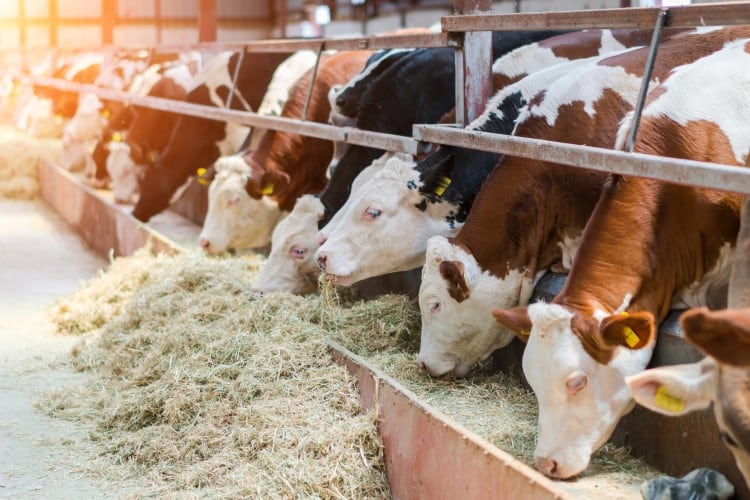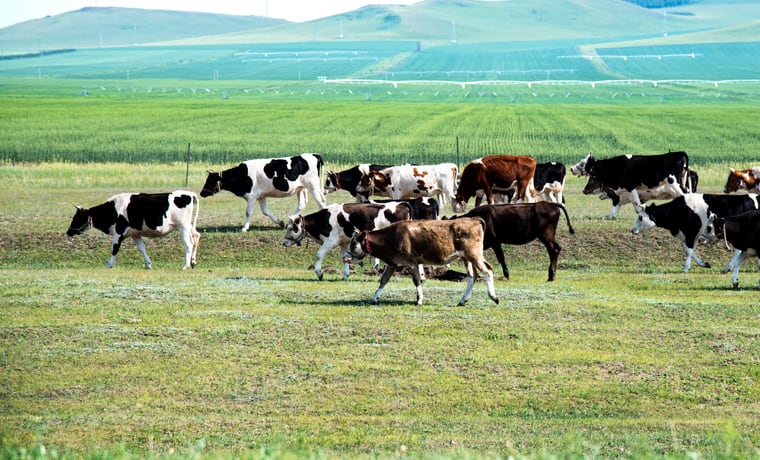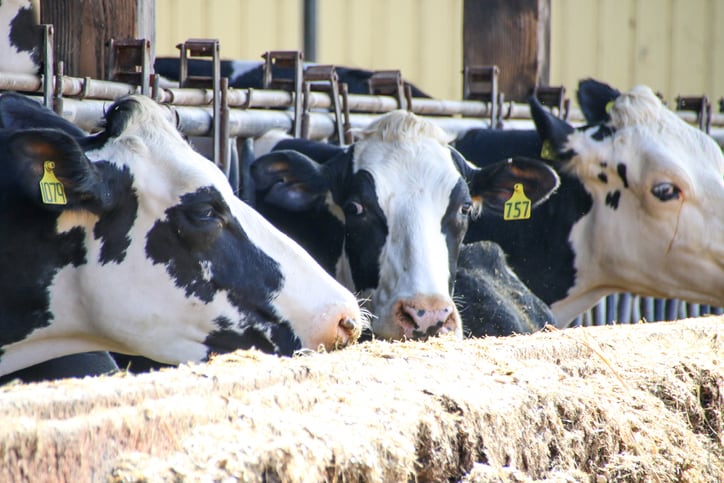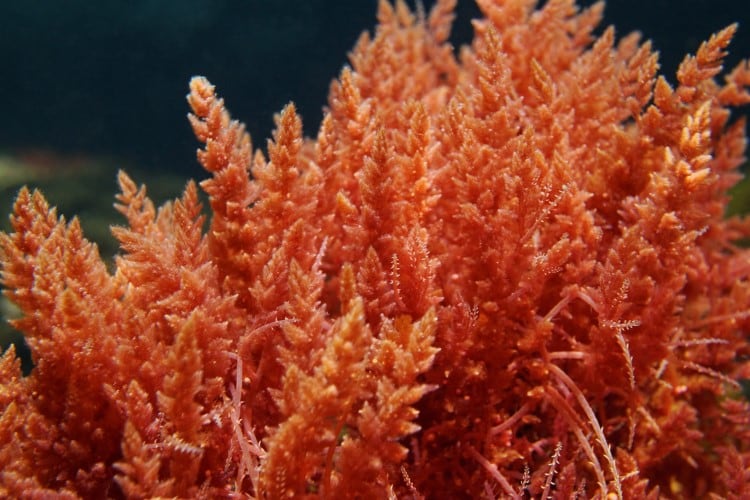Steven Eddie, ruminant nutritionist at East Coast Viners Animal Nutrition, has warned of a challenging winter for beef and dairy producers after a summer of challenging weather for silage-making. He stated that silage stocks produced in the Northeast have been ‘varied’, with samples from early first cuts ‘tending to show good nutrient values; however, yields for many were back due to the dry conditions’.
“Grass quality for many later cut crops was poor as most swards had shot, producing seed heads, reducing the nutrient value and digestibility of the grass. Chances to mow were caught between the showers and many crops saw little or no wilt or got caught in the showers and lay for several days. This has led to many farmers reporting an increased number of bales, many of which will have a lower feed value than desired.
“As we look forward to winter feed plans, now is the time to take stock and consider what is needed to ensure optimum feeding for your cattle.”
Georgina Chapman, nutritionist and technical support manager at agricultural commodities company ED&F Man, echoed this view. Quoting recent research carried out by Trouw Nutrition GB that analyzed over 500 second cuts where found high levels of NDF and lignin was found - and would likely affect digestibility and intake of silage - she added: "Compared to figures from last year, crude protein is down around 1% and ME is down around 0.2-0.3MJ." But when it comes to early reports about the quality of farm-produced forages, the jury is still out. "Trouw Nutrition have speculated that although maize crop is looking strong in the field, the lack of sunshine may be having implications on cob development and starch content so testing will be key."
In cases where good quality silage is scarce, straw could supplement grass silage, despite being a low-protein source. “It is an effective source of long fibre and there are a number of ways of improving both animal intakes and their utilisation of straw making it a substitute for silage,” Eddie explained, adding that there should be 'good quality' straw available this season. "Straw yield would be back on last year," he said. "Some of the winter crops more than likely got chopped due to wet weather and to clear ground to allow for sowing the next crop. Any straw baled in the last three weeks would be really good quality. Reports from the Ring of square bales of straw making £70/t ex farm; a straw dealer said £80/t."
While the feeding quality of straw can be improved through chemical treatment, this is a costly option currently according to Eddie, who suggested that other suitable feeds that promote 'vigorous rumen fermentation' should be supplemented. "This maximises the rate of microbial growth in the rumen and makes full use of the digestible fraction of the straw itself. The two critical components of supplementary feeds are a good source of fermentable energy (FME) paired with a compatible supply of effective rumen degradable protein (ERDP),” he explained.
For example, molasses-based liquid feed can help improve palatability and ensure intake of the straw portion of the diet. “Up to half of the silage requirements can be replaced with a molasses blend and straw,” Eddie stated. “The high palatability of molasses makes it an ideal supplement to lower quality forages such as straw, hay and poorer quality silage by increasing intakes and enhancing their nutritive value.”
Asked how the addition of molasses to a dairy cow's diet could affect milk production and composition, ED&F Man's Georgina Chapman told us that several research trials had been carried out both in vitro and in vivo, results from which have been shared in the table at the bottom of the article. In relation to enteric methane, "ED&F Man have done some significant investment into research where we did look at the effects of feeding a molasses based liquid feed on methane production," she told us. "The results of this trial were presented at the British Society of Animal Science conference in March 2023.
"In summary, we found an increase in milk fat percentage indicating better use of fiber, and a small decrease in the production of methane." - Georgina Chapman, ED&F Man
Chapman added: "Molasses-based liquid feeds do not affect rumen pH, despite the high level of rapidly-fermentable carbohydrates, the fermentation of six-carbon sugars favor butyric acid production in the rumen which is the least acidic of the typical VFAs. In addition, sugars also stimulate the removal of VFAs from the rumen at a greater rate so the rumen does not have acids present for too long."
Eddie concluded: “Molasses blends complement a total mixed ration by supplying energy and protein to the diet itself whilst binding the TMR and distributing nutrients evenly to ensure safe and uniform intake by animals. We are not really looking for it to trump silage nutritionally – it’s more about either making use of what people have already or bridging a gap in fodder stocks. It’s easier to source and haul lorry loads of straw than silage."
Chapman echoed this: "It is not a case that straw and molasses trumps grass silage nutritionally - it’s that it can equal it within a ration in order to conserve more forage in case of low reserves. Typically, straw is an unpalatable and low nutritional feed but with the addition of a molasses based liquid feed, this can allow greater digestibility and fermentation of straw within the rumen. Six-carbon sugars present in molasses-based liquid feeds are more highly rumen fermentable and more effective at improving fibre digestion than five-carbon sugars."
She added that ED&F Man carried out a trial with South West Dairy Development Centre where within a buffer feed, they replaced 7.5kg/16.5lb of grass silage with 1.5kg/3.3lb of wheat straw and 1.5kg/3.3lb of one of the company's molasses-based liquid feeds without affecting milk yield, composition or animal health.
Concluding, Eddie said: "By providing a balanced and synchronised supply of energy and protein, this leads to increased microbial protein production and better animal performance. With a higher yield of microbial protein, less extra protein in the form of soya or bypass protein need to be fed. This maximises rumen performance resulting in a more cost-effective ration.”





